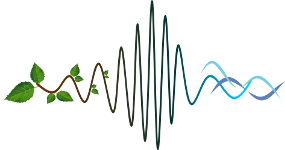Both marine mammals and hydroacoustic instruments use underwater sound to communicate, navigate and/or infer information about the marine environment. Concurrent timing of acoustic activity and/or the use of similar frequency regimes may result in (potentially mutual) masking of acoustic signals when both sources are within reception range. Earlier studies have provided evidence that marine mammal fitness might be negatively impacted both on individual and population level when animal sounds are masked by anthropogenic sound sources. Hydroacoustic studies on the other hand may generate low quality data or suffer data loss as a result of bioacoustic interference. In analogy to landscape planning, the concept of soundscape planning aims to reconcile potentially competing uses of acoustic space by managing the anthropogenic sound sources. We here present a conceptual framework to explore the potential of soundscape planning in reducing (mutual) acoustic interference between hydroacoustic instrumentation and marine mammals. The basis of this framework is formed by the various mechanisms by which acoustic niche formation occurs in species-rich communities that acoustically coexist while maintaining hi-fi soundscapes, i.e., by acoustically partitioning the environment on the basis of time, space, frequency and/or signal form. Hydroacoustic measurements often exhibit certain flexibility in the timing, signal characteristics and even instrument positioning, potentially offering the opportunity to minimize the underwater acoustic imprint. We evaluate how the principle of acoustic niches (i.e., the partitioning of the acoustic space) could contribute to reduce potential (mutual) acoustic interference based on actual acoustic data from three recording locations in polar oceans.
|
|
|
|
Wednesday
18
Noise II
› 14:45 - 15:00 (15min) › Rouelle Conference Hall
Soundscape planning: an acoustic niche for anthropogenic sound in the ocean?
1 : Alfred-Wegener Institute for Polar and Marine Research
(AWI)
-
Website Am Alten Hafen 26 27568 -
Germany
|
| Online user: 1 | RSS Feed |

|

 PDF version
PDF version